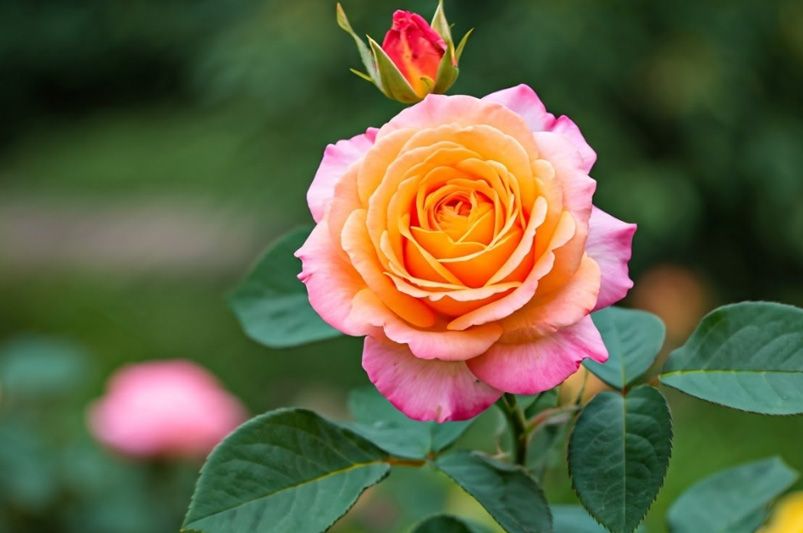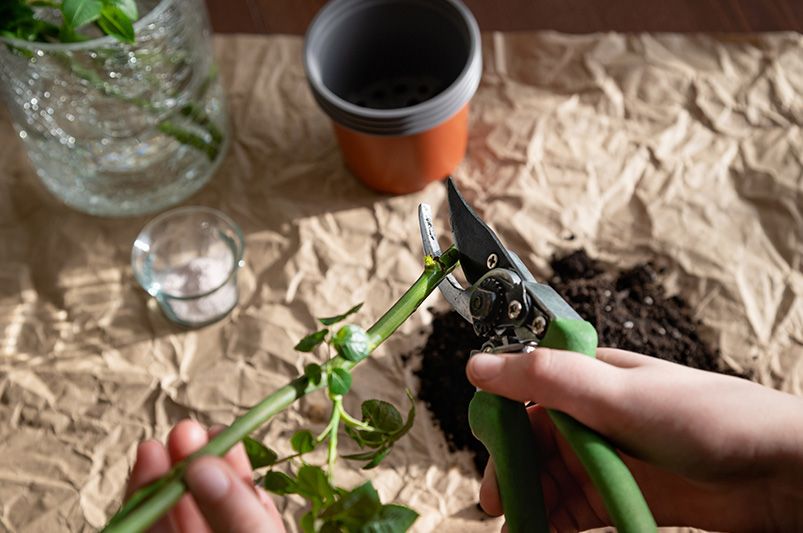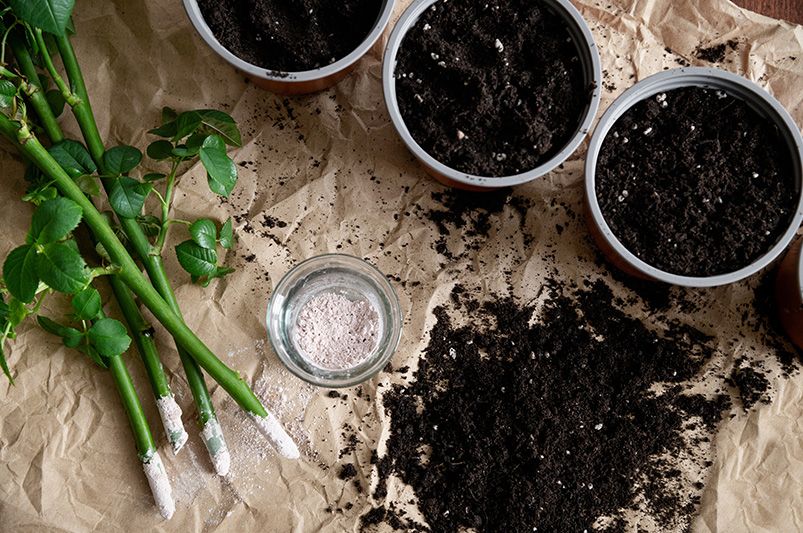
Master Rose Bush Propagation: Easy Steps for Success
Published: 29/10/2024 | Updated: 29/10/2024
Key Highlights
- Learn how to easily propagate rose bushes from cuttings and expand your garden.
- Discover the best time to take cuttings and the right tools and materials you'll need.
- Follow our step-by-step guide for successful rose propagation, from preparing the planting area to caring for new bushes.
- Find solutions to common problems in rose propagation, such as dealing with pests, diseases, and poor root development.
- Explore frequently asked questions about propagating roses and get expert advice for the best results.
Introduction
Imagine having a garden full of your favorite roses. Picture that all of them come from your own hard work. Many think rose propagation is just for expert gardeners. However, beginners can also learn how to do it. This simple guide will help home gardeners gain the skills they need. You will learn to create new plants from a single rose bush. Soon, you can turn it into a beautiful rose garden.


Understanding Rose Propagation Basics
Rose propagation means making new rose plants from those that already exist. One popular way to do this is by using rose cuttings. This method involves taking a part of a healthy rose stem and helping it grow new roots. In the end, the cutting can grow into its own plant.
Using a rooting hormone can increase success in this process. This hormone comes as a powder or liquid. It helps cuttings grow roots more quickly. While you don’t have to use it, rooting hormone can really help, especially for beginners or those with tough rose varieties.

The Significance of Propagating Roses
Propagating roses has many benefits for gardeners, no matter their skill level. First, it is a cost-effective way to grow your garden with your favorite rose bushes without buying new ones. With some patience and the right methods, you can make many new plants from just a few parent plants.
Also, propagating lets you create roses that grow on their own roots. These plants are often stronger and more durable than those made through grafting. This method helps you keep the special features of beloved heirloom roses, so their beauty and scent can be enjoyed by future generations.
Lastly, propagation is great when you want to copy a rose that does well in your garden. By using cuttings from a healthy plant, you can boost the chances of a new rose bush thriving in your garden's specific conditions.
Different Methods of Rose Propagation
Softwood cuttings are the most common way to grow roses. You should take these cuttings from new growth in late spring or early summer. The stems should be flexible but starting to harden.
Another method is to use semi-hardwood cuttings. These cuttings are taken in late summer from stems that have hardened a bit. They can work, but they may take longer to root than softwood cuttings.
Finally, there are hardwood cuttings. You take these during the dormant season from mature, woody stems. While it's possible to use hardwood cuttings, they can be more difficult. They usually have a lower success rate compared to softwood and semi-hardwood cuttings.
Preparing for Rose Propagation: What You Need
Before you start your rose propagation journey, it's important to get the right tools and materials. This way, you can have a smooth and efficient process. It will make it easier for you to succeed.
When you gather everything you need ahead of time, you'll have the right equipment at each step. This lets you focus on the task and not get interrupted.

Essential Tools and Materials for Starting
- First, you need a sharp knife or a pair of pruners. These tools are important for making clean cuts. Clean cuts are good for your cuttings and help protect the parent plant. Use bypass pruners to get the cleanest cuts.
- Next, choose a good rooting medium. This will give support and nutrients to your cuttings. The best option is a well-draining potting mix made for rooting or starting seeds. You can make your own mix with equal parts of perlite, vermiculite, and peat moss.
- Finally, use a container that has drainage holes for your cuttings. This can be a clay pot, a plastic nursery pot, or a recycled container with enough drainage.

Selecting the Right Rose Cuttings
- Look for healthy and strong rose stems that have just finished flowering. Good stems are usually green and soft, not old and hard. Stay away from stems that show signs of disease or pests.
- When taking the cutting, cut a piece of stem that is about 6-8 inches long. Make the cut at a 45-degree angle just below a leaf node, which is the slightly thick part where a leaf or branch comes out from the stem.
- The type of rose you are working with can change which stem you choose. For climbing roses, it's better to pick stems that have bloomed before since they root more easily. Remember, picking healthy and vibrant cuttings can greatly increase the chances of successful propagation.
A Step-by-Step Guide to Propagating Rose Bushes
- To start rose propagation, choose a healthy parent plant in late spring or early summer.
- Use sharp pruners to cut a 6-inch rose stem just below a set of leaves.
- Make sure the stem has a node.
- Remove leaves and flower buds from the bottom part of the stem.
- Dip the cut end in rooting hormone.
- Plant it in moist potting mix with perlite.
- Cover the pot with a plastic bag to keep humidity high.
- Place the pot in indirect light.
- Once you see root growth, move the new rose plant to a new spot so it can bloom.
Step 1: Preparing the Planting Area
To plant your rose cuttings, it's important to prepare the area well. Choose a spot that gets bright, indirect light during the day, since strong sunlight can hurt delicate cuttings.
If you are planting in the ground, add compost or other organic matter to boost drainage and soil health. Then, dig a small hole that is a bit bigger than the cutting's root system.
If you are using containers, fill them up with a well-draining potting mix. Make sure to wet it evenly. The pot should be deep enough to hold the cutting and let good root development happen.
Step 2: Cutting and Preparing the Stems
Using a sharp knife or pruners, take off the leaves from the lower two-thirds of the stem cutting. If you leave the leaves on, they may get buried in the soil and rot. This can slow down root development. Making clean cuts helps reduce stress on the cutting and helps it heal faster.
Next, find the leaf nodes on the stem. These nodes are very important because they have special cells that help with root development. Make a cut right below a node and make sure the cut is clean and angled.
After you have removed the lower leaves and found the nodes, it's time to treat your stem cuttings with rooting hormone, if you want. This step can help a lot but is not necessary. Just dip the bottom inch of the cutting into the rooting hormone and tap off any extra.
Step 3: Planting the Cuttings
- Planting in the Ground: First, put the bottom of the stem, which has rooting hormone on it, into the hole in the ground you prepared. Make sure at least two leaf nodes are covered by the soil to help root growth from different spots. Lightly press the soil around the cutting to make it stable and remove any air pockets.
- Planting in Containers: Make a hole in the wet potting mix using your finger or a small tool. Gently put the hormone-treated bottom of the cutting into the hole, making sure at least two nodes are under the mix. Press the potting mix lightly around the cutting so it stays in place and touches the rooting medium well.
Once you finish planting, water the cuttings well and let any extra water drain away. Keep the soil moist during the rooting period, but be careful not to overwater. This can cause root rot.
Step 4: Caring for Your New Rose Bushes
To help roots grow, make a humid space around the cuttings. If you are planting outside, you can cover the cuttings with a cloche, a plastic bottle with the bottom cut off, or a clear plastic bag supported by sticks. This will create a mini-greenhouse.
For growing inside, keep a warm and humid space by misting the cuttings often. Also, place the containers on a tray filled with water and pebbles. Make sure the bottom of the container does not sit in water to avoid soggy soil.
The best time to propagate roses is during their growing season in late spring to early summer. This time is great for good root development.
Troubleshooting Common Issues in Rose Propagation
Even with your hard work, you may face challenges when propagating roses. Knowing the common problems and how to solve them can help you react quickly. This will improve your chances of success.
Problems like pests, diseases, and weak root development can occur. Being ready allows you to handle these issues well. This way, you can turn setbacks into chances to learn.
Dealing with Pests and Diseases
Pests and diseases can easily harm your efforts in rose propagation. To stop infestations, make sure your tools and containers are clean and sterilized before you use them. Check your cuttings often for signs of pests like aphids or spider mites. If you see any, take action right away. You can use insecticidal soap or neem oil to control most common garden pests in an organic way.
Diseases such as powdery mildew or black spot often happen due to too much humidity or poor air circulation. Leave enough space between your cuttings and make sure there is good ventilation to avoid fungal growth.
If you keep having problems with pests or diseases, talk to a local nursery or gardening expert. They can give you helpful advice on the right treatments. Their knowledge can help you protect your rose cuttings and help them grow healthy right from the start.
Addressing Poor Root Development
If your rose cuttings are not showing roots after a few weeks, it's time to check their growing conditions. They might not be getting enough light, water, or warmth, which can stop root growth.
Make sure the cuttings get bright, indirect light for most of the day. Water them only when the top inch of the soil feels dry. Be careful to avoid overwatering or underwatering. If it takes longer than the normal 4-6 weeks for roots to develop, try gently pulling on the base of the cutting to check for roots.
Sometimes, using a rooting hormone or a different way to propagate can help roots grow better. Don’t hesitate to experiment and change your methods based on what you see and what your rose cuttings need.
Conclusion
Propagating rose bushes can be a fun and rewarding task for anyone who loves gardening. You can grow new rose plants from cuttings by following some easy steps. First, choose healthy stems. Next, give them the right care and be patient while your new roses grow roots. If you have problems like pests or diseases, deal with them quickly to keep your rose plants healthy. With hard work and the right tips, you can enjoy beautiful blooming roses in your garden every year. Happy gardening!
Frequently Asked Questions
What is the Best Time of Year to Propagate Rose Bushes?
The best time to propagate roses is during their growing season. For many areas, this is in late spring and early summer. Early fall is also a good time for this task.
Need Assistance for a Complete Landscape Makeover?
Shrubhub’s landscape design packages can significantly transform the lives of homeowners by delivering customized, professional landscaping plans tailored to their unique space and personal style. With the ease of online collaboration, you are guided step-by-step through a design process that fundamentally reshapes your outdoor environment. The result is an aesthetically pleasing and functional outdoor living area that maximizes the potential of your property.


